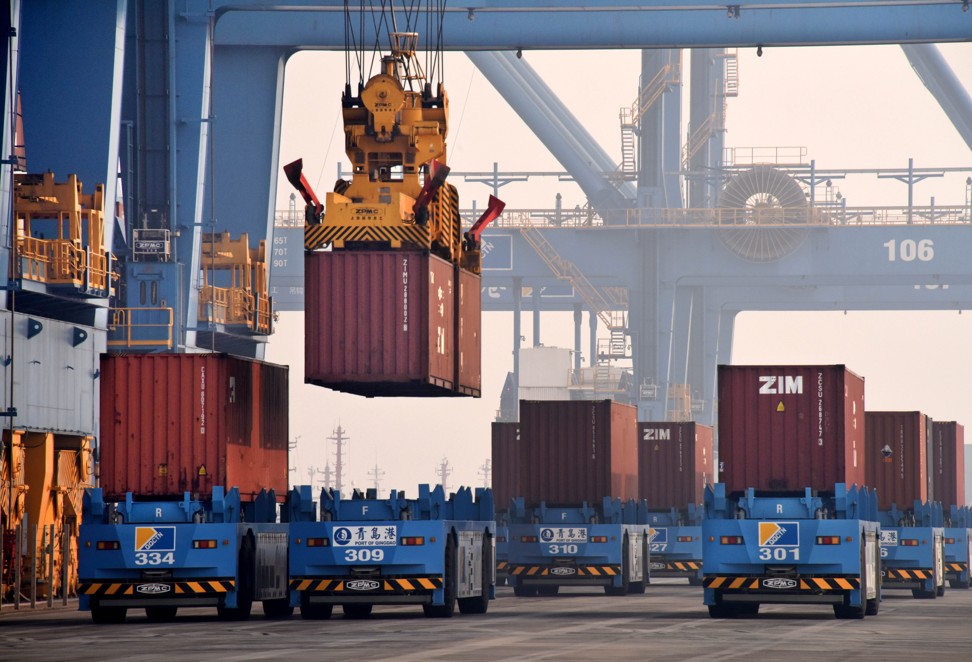
China holds off on Greater Bay Area master plan as trade turmoil clouds outlook
The blueprint was expected to be released early this year but has been delayed possibly until July or August, a Guangdong government adviser says

The release of a long-awaited blueprint for a massive economic integration plan in southern China is on hold amid “external uncertainties”, according to an economist advising the authorities.
Details of the proposed “Greater Bay Area”, a master plan to integrate Hong Kong, Macau and nine cities in southern Guangdong province, were expected to be released early this year.
But the release had not been confirmed and might be delayed until July or August, with Beijing reluctant to unveil a big economic initiative as trade turmoil with Washington added to the uncertainties, said the economist, who advises the Guangdong government on the plan.
“All eyes are on the US-China trade war so June is not a good time for Beijing to release the plan,” he said, adding that if it were rushed out it might not have the desired impact.
The Greater Bay Area plan reflects China’s ambition to turn southern China into a science and technology hub to rival the San Francisco Bay Area in the United States and Tokyo Bay in Japan. Its goal is to move China up the global supply chain and support its “Made in China 2025” plan, a target of repeated White House criticism.
Economist Lin Jiang, from Sun Yat-sen University’s Lingnan College, said the plan was vital for the country’s future and a few more weeks or months might be needed to finalise the details.
“The central government hopes the Greater Bay Area will not only replicate Silicon Valley but also outpace it as the most important centre for scientific and technological innovation,” Lin said.
He said the uncertainty in Sino-US ties might also prompt Beijing to tweak the plan to make the area “more open”.
Ling Yu-shih, a Hong Kong-based member of China’s top advisory body, the Chinese People’s Political Consultative Conference, said that continued trade ructions with Washington would stiffen Beijing’s resolve to forge ahead with the plan in the longer term.
“If the US-China trade war keeps escalating, it will only drive the central government to accelerate efforts for the development initiative to spur scientific and technological innovation,” she said.
Last year, the area’s gross domestic product surpassed 10 trillion yuan (US$1.56 trillion), which would make it the fifth-biggest economy in Asia. Its container throughput tops the world, at more than four times that of similar zones in New York, San Francisco and Tokyo combined.
Once in place, the plan will cover 56,000 sq km and 68 million people. It is expected to free up the flow of people, logistics, capital and information across the region but there are doubts about how well the Hong Kong, Macau and Guangdong administrations can merge their economies, cultures, and political and legal systems.
Ling said the plan would work only if the various systems could meld.
“For example, people from Hong Kong and Macau must receive the same treatment as residents in Guangdong and joint checkpoints must be set up to ensure a higher flow of people and trade between Hong Kong, Macau and the other cities,” she said.
Key cross-border infrastructure projects would also need to be sped up, according to Peng Peng, vice-president of the Guangdong-based South Nongovernmental Think Tank.
Those include the Hong Kong-Shenzhen Innovation and Technology Park in the Lok Ma Chau Loop, a cooperation demonstration zone in the Guangzhou district of Nansha, and the Shenzhen-Hong Kong Modern Service Industry Cooperation Zone in Qianhai.
“The plan is also expected to lead to support from Beijing to set up free-trade port in the Greater Bay Area,” Peng said.
